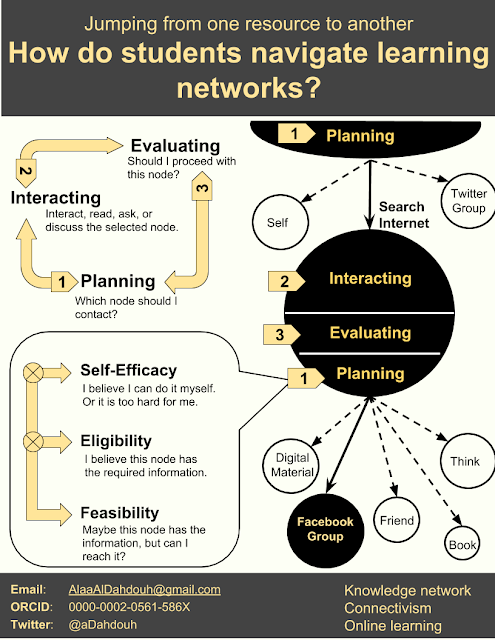How students navigate learning networks is very much unknown
Students navigate networks in three stages: planning, interacting and evaluating
Students employ three criteria to decide on resources: self-efficacy, eligibility and feasibility
Self-efficacy is very important to include oneself as useful resource to solve tasks
Abstract
Abstract A considerable amount of literature has recently appeared around the theme of learning networks and Connectivism. However, our understanding of how and why students navigate learning networks in the way they do is limited and the field lacks empirical studies investigating how students form connections. This paper presents a model showing how students form connections to different kinds of resources, along with the criteria they use to decide on which resource to choose. The findings were derived by conducting retrospective think-aloud sessions with nine participants after solving 10 tasks each. Mixed-methods approach was used in the data analysis. A goal of this research is to contribute to a deeper understanding of the navigation processes in learning networks and to provide guidance for online learning practitioners who seek to improve their practices.
Keywords:
Connectivism
Networked learning
Learning networks
Online learning
Educational technology
Internet
ICT
Information and communication technology
Cited as:
Aldahdouh, A. A. (2018). Jumping from one resource to another: how do students navigate learning networks? International Journal of Educational Technology in Higher Education. https://doi.org/10.1186/s41239-018-0126-x


Comments
Post a Comment